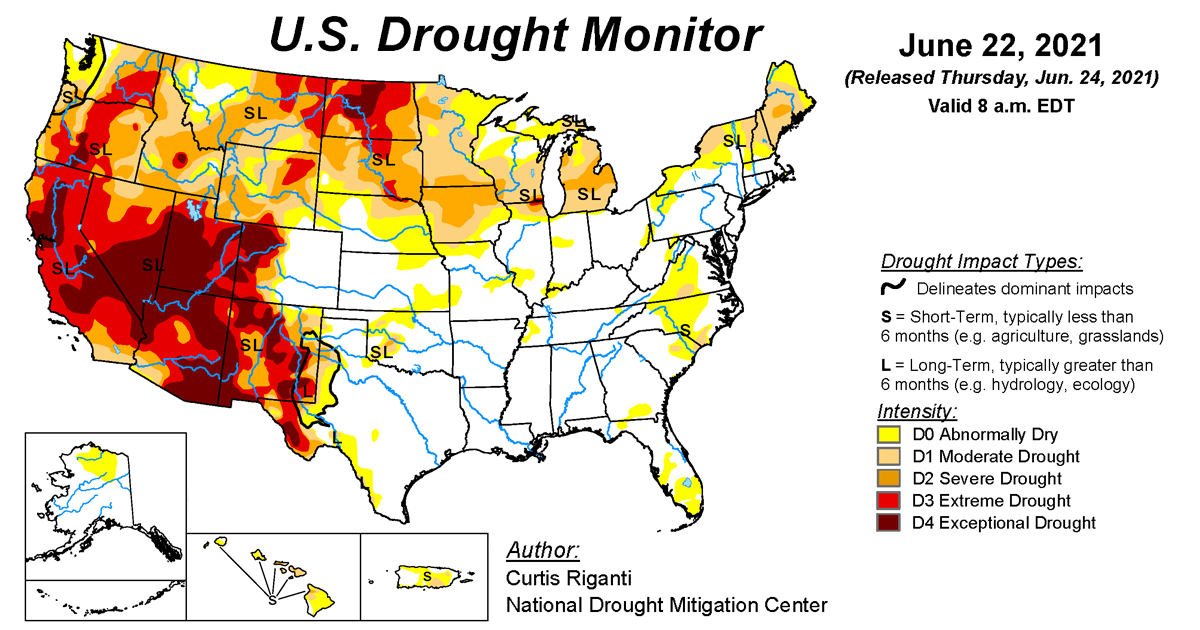
According to the June 22, 2021, U.S. Drought Monitor, moderate to exceptional drought covers 39.9% of the United States including Puerto Rico, an increase from last week’s 38.5%. The worst drought categories (extreme to exceptional drought) increased from 17.9% last week to 18.2% this week.
The strong ridge of high pressure, which became established over the central part of the contiguous United States last week, shifted westward. Upper-level troughs slammed into the ridge and were deflected to the north to ride over the top of the ridge. These Pacific weather systems moved into more favorable conditions over the eastern contiguous United States. The upper-level circulation pattern averaged for the week consisted of a ridge over the western U.S., centered over the Southwest, and a trough over the East. The ridge kept the West and much of the Great Plains warmer and drier than normal. The upper-level trough funneled cool Canadian air masses into the eastern U.S., where the week ended up near to cooler than normal.
Some of the fronts and their associated surface low-pressure systems brought above-normal precipitation to parts of the Midwest, while the fronts and tropical system Claudette gave much of the Southeast above-normal rainfall. Drought and abnormal dryness contracted in parts of the Southeast and Midwest where beneficial rains fell, but expanded or intensified in parts of the central to northern Rockies, Great Plains, Mid- to Upper-Mississippi Valley, and New England. Expansion exceeded contraction, so the nationwide moderate to exceptional drought area rose this week.
Abnormal dryness and drought are currently affecting over 132 million people across the United States including Puerto Rico—about 42.6% of the population.

The full U.S. Drought Monitor weekly update is available from Drought.gov.
In addition to Drought.gov, you can find further information on the current drought as well as on this week’s Drought Monitor update at the National Drought Mitigation Center.
The most recent U.S. Drought Outlook is available from NOAA’s Climate Prediction Center and the U.S. Department of Agriculture provides information about the drought’s influence on crops and livestock.
For additional drought information, follow #DroughtMonitor on Facebook and Twitter.



